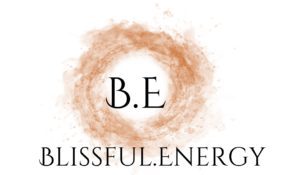
Deep Tissue vs. Swedish Massage: Unraveling the Key Differences
When it comes to massage therapy, there are numerous techniques and modalities available, each with its own unique benefits and applications. Two of the most popular and widely practiced forms of massage are deep tissue and Swedish massage. While both aim to provide relaxation and alleviate muscle tension, they differ significantly in their methods, pressure levels, and therapeutic goals.
We will delve into the world of deep tissue and Swedish massage, highlighting their fundamental disparities, therapeutic effects, and when to choose one over the other.
Understanding Swedish Massage
Origins and History
Swedish massage, also known as classic massage, owes its name to Per Henrik Ling, a Swedish physiologist who developed the technique in the early 19th century. This modality became widely popular and is often considered the foundation of many Western massage styles.
Technique and Approach
Swedish massage is characterized by its gentle, flowing strokes and soothing movements. It employs a combination of five primary techniques:
Effleurage: Effleurage involves long, gliding strokes that serve as a warm-up for the muscles. Therapists use their palms, fingers, and forearms to apply even pressure in the direction of blood flow, promoting relaxation.
Petrissage: This technique entails kneading, rolling, or squeezing muscles and tissues. It helps release tension and enhances circulation in the targeted area.
Friction: Friction involves deep, circular movements applied using the fingertips or thumbs. It is used to break down knots and adhesions in muscles.
Tapotement: Tapotement consists of rhythmic tapping, pounding, or chopping motions. It is often employed to stimulate muscles and invigorate the body.
Vibration: Vibration is a fine, trembling movement applied to specific areas. It is used to soothe and relax muscles.
Pressure Level and Goals
Swedish massage is known for its gentle to moderate pressure. It primarily focuses on promoting relaxation, improving circulation, and reducing stress. This massage style is ideal for individuals seeking a calming and revitalizing experience. It can help alleviate minor muscle tension but is not specifically designed for deep tissue work or pain relief.
Deep Tissue Massage: Going Beneath the Surface
Origins and History
Deep tissue massage has its roots in various ancient massage traditions, but it gained prominence in the 20th century as a distinct modality. Unlike Swedish massage, which aims for relaxation and overall well-being, deep tissue massage targets specific muscle groups and deeper layers of tissue.
Technique and Approach
Deep tissue massage employs slow, deliberate strokes with intense pressure applied to the muscles. Therapists use their knuckles, elbows, and forearms to access the deeper layers of muscle and connective tissue. The key techniques include:
Stripping: Stripping involves applying deep, gliding pressure along the muscle fibers using the elbow, forearm, or thumbs. This helps release muscle tension and break down adhesions.
Trigger Point Therapy: Therapists locate and apply sustained pressure to trigger points—small knots in the muscles that can cause referred pain in other areas of the body.
Cross-Fiber Friction: Cross-fiber friction targets specific muscle fibers, helping to break down scar tissue and alleviate chronic muscle pain.
Deep Transverse Friction: This technique involves deep, transverse movements applied to tendons and ligaments to reduce tension and promote healing.
Pressure Level and Goals
Deep tissue massage is characterized by its firm to very firm pressure. Its primary objective is to relieve chronic muscle tension, address specific musculoskeletal issues, and promote pain relief. It is an ideal choice for individuals with chronic pain conditions, sports injuries, or those seeking more therapeutic benefits than relaxation.
Key Differences Between Deep Tissue and Swedish Massage
Now that we have explored the individual characteristics of deep tissue and Swedish massage, let’s compare them in various aspects to better understand their differences.
Pressure Intensity
One of the most significant distinctions between these two massage modalities is the level of pressure applied:
Swedish Massage: As mentioned earlier, Swedish massage employs gentle to moderate pressure. It is designed to induce relaxation and improve overall well-being without causing discomfort.
Deep Tissue Massage: Deep tissue massage, on the other hand, involves firm to very firm pressure. It aims to access deeper muscle layers and target specific areas of tension. While some discomfort may be experienced during deep tissue massage, therapists should always work within the client’s comfort zone.
Therapeutic Goals
The therapeutic objectives of these massages also differ substantially:
Swedish Massage: Swedish massage primarily focuses on relaxation, stress reduction, and improving circulation. It is an excellent choice for individuals seeking a calming and rejuvenating experience.
Deep Tissue Massage: Deep tissue massage is geared towards addressing chronic pain, muscle tightness, and musculoskeletal issues. It is often recommended for athletes, individuals with chronic pain conditions, or those in need of focused pain relief.
Techniques and Strokes
The techniques and strokes used in each modality underscore their respective purposes:
Swedish Massage: Swedish massage employs long, flowing strokes, kneading, and gentle tapping. It aims to create a sense of relaxation and well-being through its soothing movements.
Deep Tissue Massage: Deep tissue massage uses slower, more deliberate strokes that target specific muscles and deep layers of tissue. Techniques like stripping and trigger point therapy are common in deep tissue work.
Conditions Treated
The range of conditions that each massage type is best suited for can help you decide which one is more appropriate for your needs:
Swedish Massage: Swedish massage is ideal for relieving everyday stress, reducing tension headaches, and promoting relaxation. It is a great choice for people looking to unwind and de-stress.
Deep Tissue Massage: Deep tissue massage is recommended for addressing chronic pain conditions such as fibromyalgia, sciatica, and muscle injuries. It can also be beneficial for athletes looking to enhance their performance and recover from sports-related injuries.
Duration of Sessions
The length of the massage sessions can vary based on the goals and techniques involved:
Swedish Massage: Standard Swedish massage sessions typically last 60 to 90 minutes, providing ample time for the therapist to work on relaxation and circulation.
Deep Tissue Massage: Deep tissue sessions may vary in length but often run from 60 to 120 minutes. This allows the therapist to target specific areas of tension and address chronic issues thoroughly.
When to Choose Deep Tissue vs. Swedish Massage
Choose Swedish Massage If:
You are looking to relax and de-stress.
You want to improve circulation and overall well-being.
You have a low tolerance for intense pressure or discomfort.
You are new to massage therapy and want to start with a gentler experience.
Choose Deep Tissue Massage If:
You have chronic muscle pain or tension.
You are an athlete seeking recovery and injury prevention.
You have specific musculoskeletal issues that require targeted treatment.
You are comfortable with, or prefer, firm to very firm pressure.
Combining Deep Tissue and Swedish Massage
In some cases, individuals may benefit from a combination of both deep tissue and Swedish massage techniques within a single session. This hybrid approach allows therapists to address specific areas of tension with deep tissue techniques while providing overall relaxation and stress reduction through Swedish massage strokes.
For example, a massage therapist may start with Swedish techniques to warm up the body and induce relaxation. Once the client is sufficiently relaxed, they can transition into deep tissue work to address specific problem areas. This combination can offer the best of both worlds, catering to both therapeutic and relaxation needs.
Deep Tissue vs. Swedish Massage
The choice between deep tissue and Swedish massage should be based on your specific goals and preferences. Swedish massage is the go-to option for relaxation and stress relief, while deep tissue massage excels at targeting chronic pain and musculoskeletal issues. By understanding the differences between these two modalities, you can make an informed decision and reap the benefits of the massage that best suits your needs. Whether you seek relaxation, pain relief, or a combination of both, the world of massage therapy has much to offer to enhance your well-being and overall quality of life.
Written by SEO Company in Melbourne, FL
